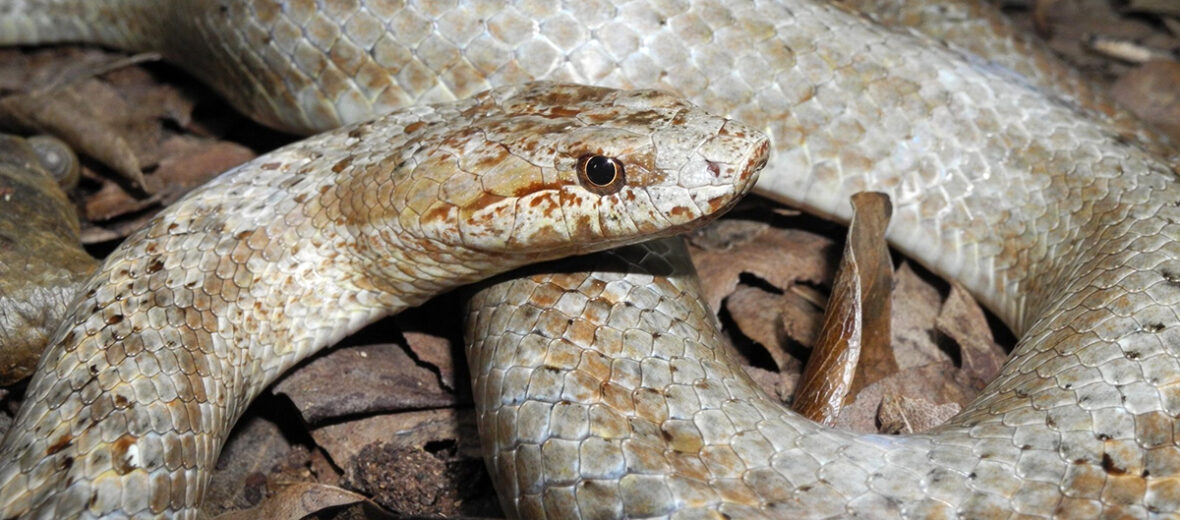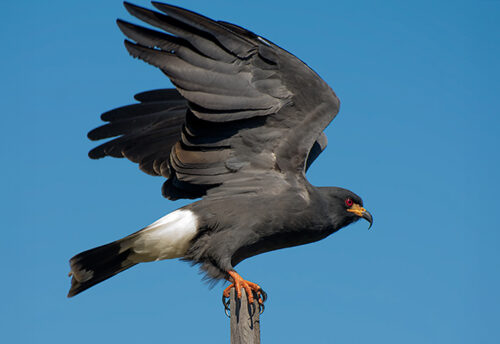
The Antiguan racer is a snake species that until recently was only found on Great Bird Island off the coast of Antigua, in the eastern Caribbean. Antiguan racers are among the rarest snake species in the world. These serpents belong to the family Dipsadinae, which includes roughly half of the world’s known snake species. They face the threats of human intrusion; habitat destruction at the hands of fires and fire suppression efforts; invasive species, and with them predation; and climate change, which causes flooding and habitat altering storms. They are listed as Critically Endangered by the IUCN, but their numbers are slowly increasing.
First the Stats…
Scientific name: Alsophis antiguae
Weight: Up to 1+ lb.
Length: Up to 3.28 feet
Lifespan: Up to 10+ years
Now on to the Facts!
1.) These snakes originally inhabited Antigua and Barbuda & most likely all of the islands on the Antigua Bank.
2.) By 1995, these snakes were only found on Great Bird Island, a small island off of the northeast coast of Antigua.
3.) They prefer a shady woodland habitat with thick undergrowth, however, they can also be found on sandy beaches and rocky outcrops.
4.) Antiguan racers are diurnal (active during the day).
5.) These critters unfortunately have a poor resistance to the common snake mite.
But wait, there’s more on the Antiguan racer!
6.) Various lizards make up the bulk of their diet.
7.) In the late 15th century, European settlers started to colonize and develop Antigua and Barbuda for huge plantations of sugarcane. The ships that brought slaves to the island (and those that also or instead carried away rum or other tropical products) also subsequently introduced rats.
Did you know…?
In 1995 researchers estimated that only 51 Antiguan racers existed on Great Bird Island. In the last 20 years however, conservation efforts have increased their populations to an estimated 1,100 individuals.
8.) Their primary adversaries are black rats, which tend to feast on the snake’s eggs, and mongooses, that were introduced to cull the rat problem, but instead prey on the juvenile and adult snakes and their lizard prey.
9.) The Antiguan racer has been successfully reintroduced to the nearing Green Island, Rabbit Island, and York Island.
10.) Females lay up to 11 eggs each season.
But wait, there’s still more on the Antiguan racer!
11.) Besides hurricanes and humans killing them (despite it being illegal to do so), these serpents also have to contend with inbreeding, due to a low genetic diversity.
12.) These snakes are not venomous. Their only defense when mishandled is to bite and release musk, which is a smelly liquid released from their cloaca (anus). But they tend to be very gentle and not defensive when handled properly.
Now a Short Antiguan Racer Video!
Be sure to share & comment below! Also, check out the Critter Science YouTube channel. Videos added regularly!
Want to suggest a critter for me to write about? Let me know here.
Some source material acquired from: Wikipedia & IUCN
Photo credit: Fauna & Flora



